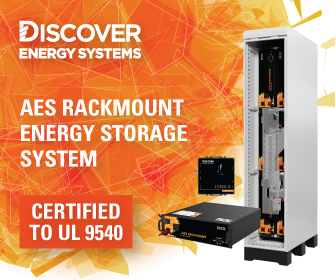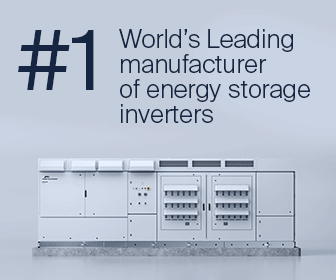Making Compact Power Connections in Electrical Enclosures
The electrification of demand and supply-side renewable energy infrastructure, like battery energy storage systems (BESS), has designers and installers constantly innovating to save space in electrical enclosures. The goal is to optimize efficiency and functionality, while reducing the physical footprint of these critical components. Several strategies are being employed to achieve this goal, including the use of more compact battery technologies, the integration of power electronics directly into battery modules, and the use of higher voltage systems to reduce current flow (allowing for the use of smaller conductors and components).
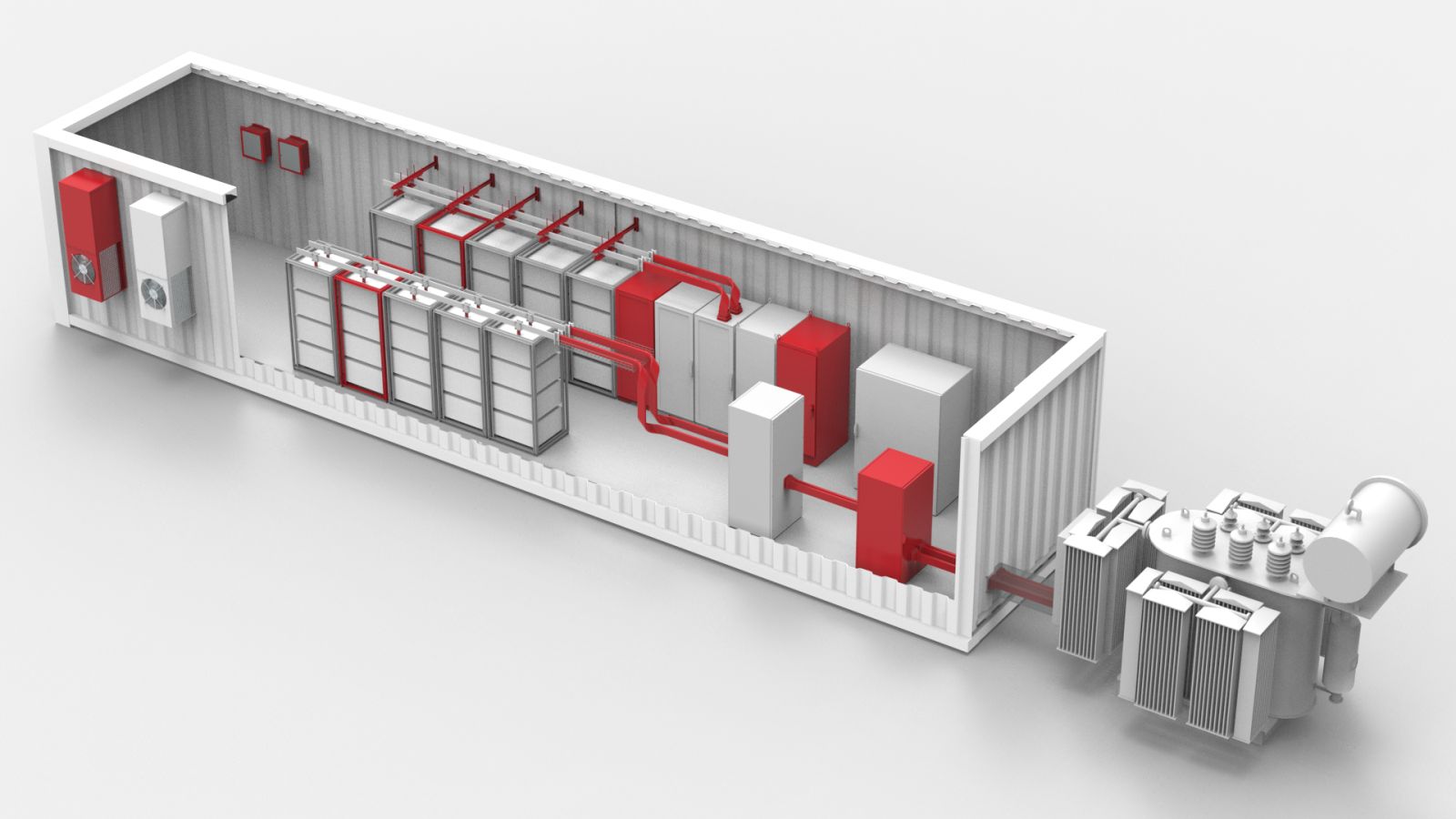
Another strategy, the optimization of electrical connections, has designers paying close attention to conductor layout within electrical panels and cabinets to ensure the most efficient use of space. Space-efficient designs can not only reduce the cost of materials required for enclosures, but also transportation and installation expenses. Moreover, minimizing these requirements can lead to better space utilization for the integration of additional components such as remote diagnostic equipment.
Cable/lug and rigid busbar arrangements are customary for making dependable, cost-effective electrical connections in many types of applications; recently however, designer and installers have been taking note of a different method that is more compact and flexible, offers low smoke and halogen-free properties in the event of a fire, and reduces installation time: flexible busbar.
Flexible busbar has a core structure consisting of multiple thin strips or rods of conductive material (typically copper or aluminum) that are braided, layered, or laminated together. This design allows the bar to be easily bent into various configurations, making it a versatile solution for connecting critical components — transformers, switchboards, generators, uninterruptible power supplies (UPS) — in confined spaces.
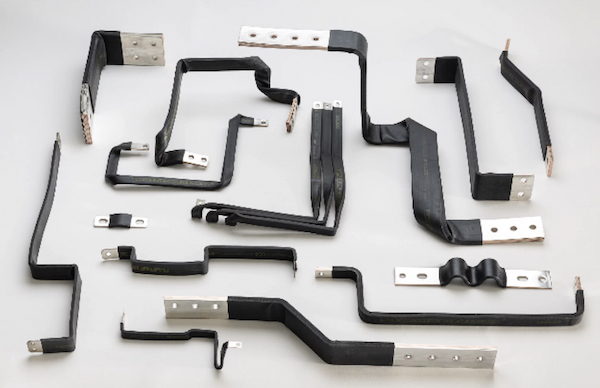
Flexible busbar is smaller and more flexible than comparable cable based on ampacity. It can be bent, folded and twisted, improving assembly time, shortening connections and decreasing its footprint.
Take, for instance, a flexible busbar that is formed from layers of thin electrolytic copper insulated with a high-resistance, self-extinguishing thermoplastic elastomer (TPE) or silicone compound. The insulating sleeve is then grooved on the inner surface, reducing the contact surface with the laminates to less than 20 percent. As the inside of the jacket is ribbed, there is less surface area for the copper laminates to adhere to, resulting in a smoother transition when folding, bending, and twisting.
Flexible busbar offers a range of potential benefits in electrical enclosures for BESS units as well as for solar combiner boxes and inverters, EV charging stations and utility substations, and transmission and distribution assets, and other renewable energy applications. Benefits include:
- Space Savings
On average, flexible busbar takes up less room than comparable cable. Compared to a 500-kcmil wire length, for example, an equivalent 3x24 flexible busbar solution represents a roughly 70 percent cross-section savings, where 500 kcmil = 253.35 mm2 and 3x24 busbar = 72 mm2. Reductions will vary depending on the specific product and ampacity utilized; however, these savings can be significant in place of rigid power connections.
- High Current-Carrying Capacity
Most flexible busbar is designed to carry high currents safely, as its low resistance allows for efficient current flow with less risk of overheating.
- Minimized Voltage Drop
Traditional busbar can introduce some level of voltage drop and impedance due to its length and resistance level. In contrast, flexible busbar tends to offer lower resistance and a shorter, more direct path for current flow, resulting in reduced voltage drop.
- Reduced Mechanical Stress
Resistance to mechanical stresses and vibrations is also improved by busbar that is flexible and does not use lugs to make connections. These conductors can connect to the front access terminals of breakers without any additional accessories such as angular connectors, spreaders, ring terminal connectors, or extenders.
- Less Risk of Faults
By minimizing the number of connections required in an enclosure, a flexible busbar arrangement can also reduce the risk of faulty connections due to there being fewer potential failure points.
- Enhanced Customization
Saving space in electrical enclosures allows for more efficient scalability and future expansion of the battery storage system. As energy demands grow, additional components can be integrated into the existing setup without requiring significant modifications or new enclosures.
- Simplified Installation
Flexible busbar is relatively easy to cut, bend, and connect. Maintenance and troubleshooting become more manageable due to the orderly arrangement and easy accessibility of flexible busbars.
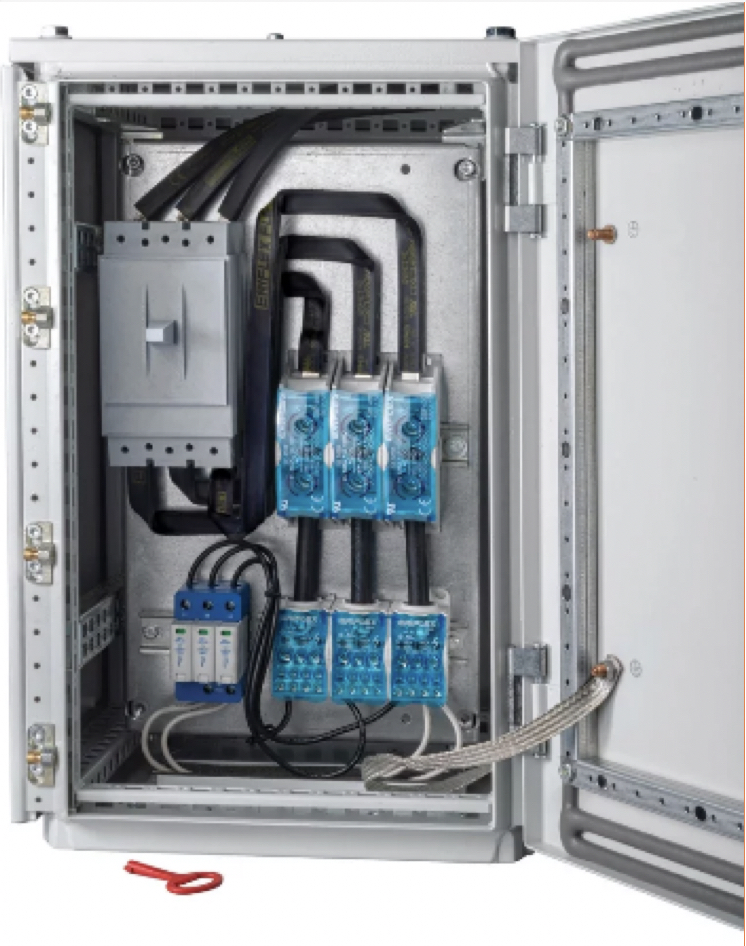 Note that flexible busbar should be properly insulated as to produce a relatively low smoke opacity with no corrosive gases generated, in accordance with ISO 5659-2, IEC 61034-2 and UL 2885, all of which are concerned with the measurement of the smoke density generated from burning materials. Insulation jacketing should exhibit low smoke, halogen-free, and flame-retardant (LSHFFR) qualities, making it suitable for use in enclosed spaces.
Note that flexible busbar should be properly insulated as to produce a relatively low smoke opacity with no corrosive gases generated, in accordance with ISO 5659-2, IEC 61034-2 and UL 2885, all of which are concerned with the measurement of the smoke density generated from burning materials. Insulation jacketing should exhibit low smoke, halogen-free, and flame-retardant (LSHFFR) qualities, making it suitable for use in enclosed spaces.
Traditional cable/lug connections and fixed, rigid busbar are commonly used in electrical installations, but can pose challenges in terms of space utilization. With advancements in materials and manufacturing processes, flexible busbar has emerged as an efficient alternative. The market offers a diverse range of solutions to address the growing need for space-saving options in electrical panels and enclosures. This need is motivated by a combination of factors including installation flexibility, enhanced energy density, cost efficiency, safety, regulatory compliance, and scalability. By addressing these considerations, designers can develop more versatile and practical solutions to meet the evolving needs of the energy storage industry.
Dave Dong is the Director of Vertical Growth in North America at nVent, a global electrical connection and protection solutions leader. With over 10 years of experience in the electrical industry, Dave specializes in battery energy storage systems (BESS), e-mobility and renewables markets. He is passionate about developing partnerships with customers to drive innovation and deliver value-added solutions.
nVent ERIFLEX | www.nvent.com
Author: Dave Dong
Volume: 2023 September/October










